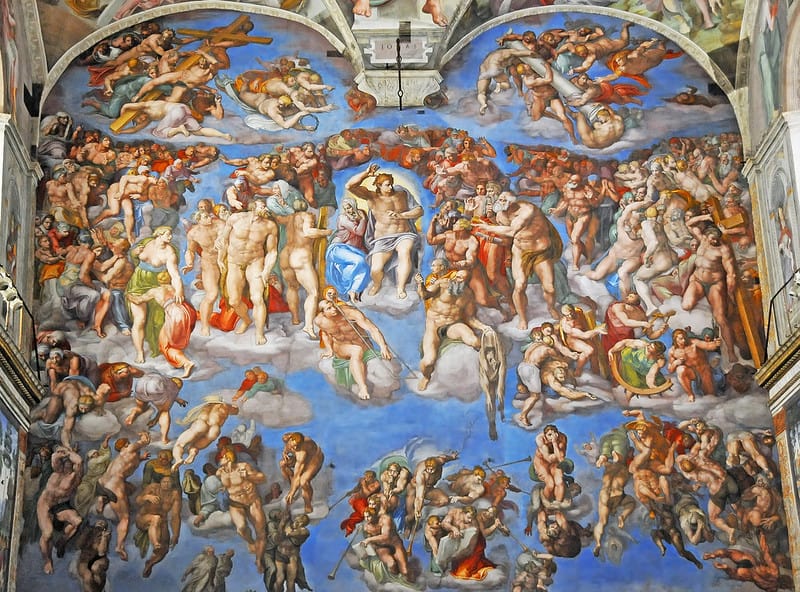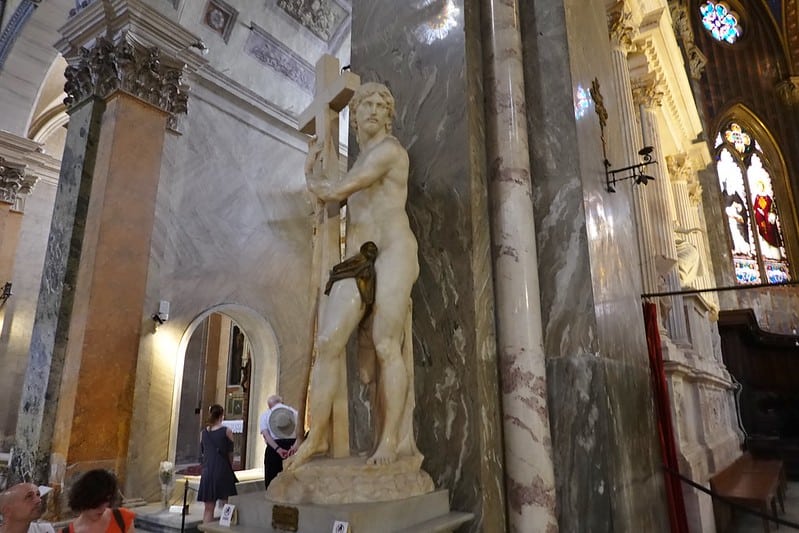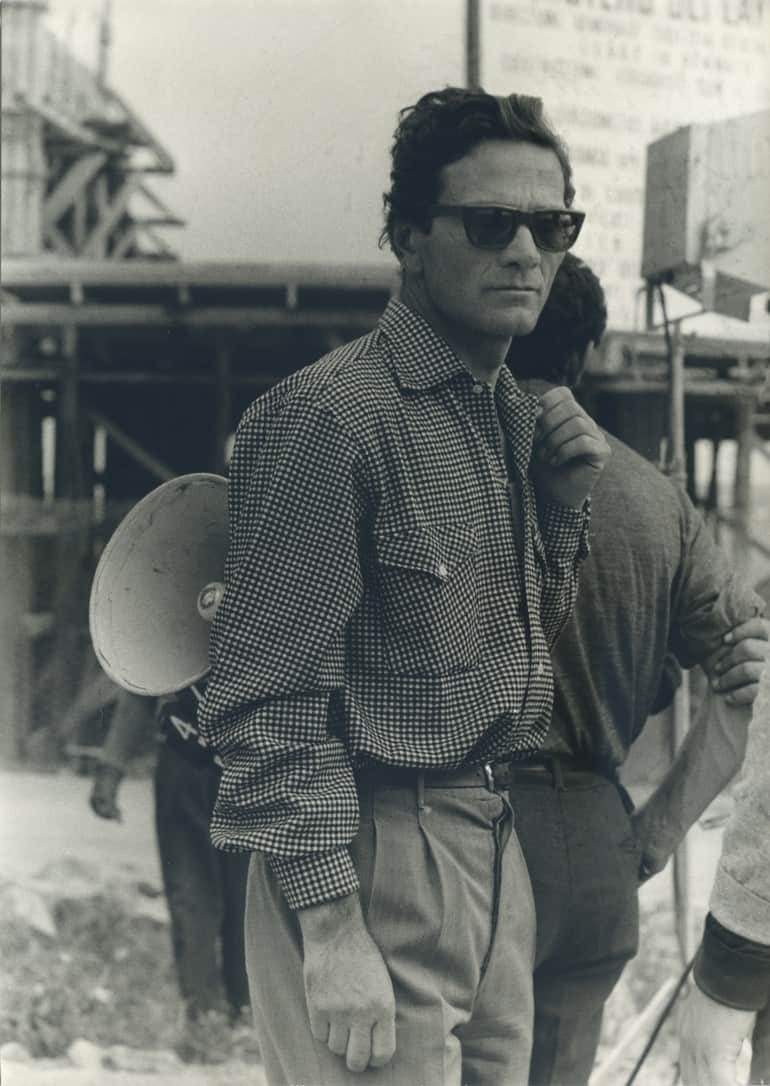Where to find Michelangelo’s masterpieces in Rome and immerse yourself in his timeless art.
Michelangelo is without a doubt one of the most remarkable, brilliant and universal artists of all time. And among Michelangelo’s many showrooms, you’ll find Rome filled with his statues, paintings, frescoes and architecture all around.
To cite his friend Vasari: ‘Among the living and the dead he who carries the palm is Michelangelo, foremost not just in one of these arts (architecture, sculpture, painting), but in all three’. Rome has ample examples of each: frescoes of unmatched quantity and quality decorate the Sistine and Pauline Chapels. Sculptures are the ‘Pietà’, S. Maria sopra Minerva’s ‘Risen Christ’, then S. Pietro in Vincoli’s ‘Mosé’. Architecture includes the ‘drum’ of S. Peter’s dome, visible throughout the city. Here, we take you through Michelangelo’s most renowned works around Rome.
Michelangelo’s Biography

Born into a Florentine merchant family, Michelangelo di Lodovico Buonarroti Simoni served as an apprentice under Ghirlandaio, then in the Medici’s sculpture garden where Lorenzo the Magnificent headhunted him, making him, in effect, a member of the Medici court. The link with Rome began by a piece of subterfuge. His Cupid, passed off as a Roman antique, was sold to Cardinal Riario in Rome. The sculptor was summoned, but as a patron the Cardinal proved disappointing. The sculptor’s first major Roman contract, via Florentine banker Jacopo Galli, was to create a work ‘more beautiful than any to be seen in Rome, and which no master of our time could better,’ meaning the ‘Pietà.‘ When Cardinal Rovere (Pope Sixtus’ nephew) became Pope Julius, Michelangelo was commissioned to help remodel S. Peter’s. So began one of art’s stormiest relationships. Julius’ tomb was dogged by money problems, wars and in 1508 a call to paint the Sistine Chapel. Come 1541 – and several Popes later – Michelangelo was still painting, this time the Last Judgment and then the Pauline Chapel. Architectural work came late on, Michelangelo in his 70s becoming Papal architect. The Campidoglio and Porta Pia are his, as is the ‘drum’ of St. Peters, crowning a love-hate relationship with the city to keep biographers busy another millennium.
La Pietà
St.Peter’s Basilica, Vatican City

‘He greatly loved human beauty for the sake of imitation in art, being able to select from the beautiful from the beautiful,’ again Vasari puts it best. Behind the beauty lies hard-gained study of anatomy: of drapes and folds, then of human bodies, the young sculptor having spent nights visiting Florence’s Santo Spirito morgue. The ‘Pietà’ proves Boccioni’s observation: ‘In him anatomy becomes music.’ Across the sash note ‘MICHELANGELUS BONARATUS FLORENTUS FACIEBAT’, chiseled in later as a corrective after visitors to S.Peter’s had been overheard ascribing the work to a lesser known rival.
Top things to see at St. Peter’s Basilica in VaticanMoses (and Julius’ Tomb)
S.Pietro in Vincoli, Piazza di San Pietro in Vincoli

Commissioned by Pope Julius in 1505, Moses was meant to be one of 40 figures on three levels, less tomb than giant mausoleum occupying a central place in the new St. Peters. Just fetching the blocks down from Carrara took Michelangelo 8 months. Meanwhile the Pope kept changing priorities. Subsequent popes brought other diversions and/or masterpieces, prompting the artist to name the tomb ‘the tragedy of his life.’ 30 years on, Farnese Pope Paul III visited Michelangelo in his studio. The Moses verging completion, but not the rest, albeit the number of statues had since been negotiated downward. The sculptor, harried by demands by the Duke of Urbino (Julius’s nephew), was assured the Pontiff’s protection: ‘To honour Julius’s tomb one statue is enough.’ Except Moses stands, all eight feet of him, not in St Peters but in S. Pietro in Vincoli. The comparatively minor setting only adds to the work’s impressiveness. Freud’s favorite statue is imbued with an intensity of expression no adjectives can quite capture. Self-control, energy, anger, inner calm,‘terribilità: all these and more are detectable. ‘Speak,’ one apocryphal story has Michelangelo order the statue after he has put the final touches. Receiving no reply, he takes a hammer and hits the statue’s knee, the dent being there to this day.
Michelangelo’s Moses Statue In RomeSistine Chapel Ceiling
Vatican Museums, Vatican City

‘So God created man in his own image; in the image of God he created he him’. The verse has no better illustration than the Sistine ceiling – from radiant-shouldered Libyan Sybil to dark-browed Jeremiah, from punished Aman to victorious David and Christ’s ancestors, from Adam and Eve both before and after the Fall to God himself, in one panel contorted horizontally in mid-air as He divides light from dark, a mirror image to Michelangelo up on the scaffold, paint dripping into his eyes.
The Secrets Of The Sistine ChapelThe Last Judgement
Vatican Museums, Vatican City

Previous depictions had all been all after the event, Christ seated on his throne. By contrast Michelangelo portrays the Last Judgment at the very moment it happens. Christ’s right leg is drawn back to give the impression of maximum energy and ‘terribilità’, the bodies (some 300) of saved and damned alike forming a cyclone orchestrated by one irrevocable gesture.
St Peter’s Dome
St Peter’s Basilica

Michelangelo didn’t live to see his Roman dream, the dome of St. Peter’s, completed. While Michelangelo followed the construction of the main drum, the actual dome, which was based on his designs, was built later in 1590, with a few modifications.
Piazza del Campidoglio

The magnificient concentric piazza del Campidoglio that lies on Capitoline Hill was designed by Michelangelo in 1536 commissioned by Pope Paul III.
The Risen Christ
Basilica di Santa Maria Sopra La Minerva, Piazza della Minerva

Agonies behind him, the risen Christ lightly supports the emblem of his martyrdom. The first sculpture commissioned having developed a black mark in the cheek area, the statue here in the Church of Santa Maria Minerva is a substitute version, started by Michelangelo in Florence and finished off (some say all too compromisingly) by assistant, Pietro Urbino.
Santa Maria degli Angeli
Piazza della Repubblica

The largest in the Empire, Diocletian’s baths were in Renaissance times mostly left intact, due to their distance from the Medieval city-centre. Michelangelo, in his 80s, inherited the skeleton of a new church already in place. Starting with the façade – a part of the caldarium – he remodeled the existing structure of The Basilica of St. Mary of the Angels and the Martyrs, putting in windows yet sparing on interior decoration so as to create a ‘theatre of light.’ Though other architects have rearranged and added a transept, that description still holds.
16 must-visit churches in Rome












